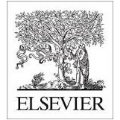Knowledge graphs have emerged as expressive data structures for Web data. Knowledge graph potential and the demand for ecosystems to facilitate their creation, curation, and understanding, is testified in diverse domains, e.g., biomedicine. The Shapes Constraint Language (SHACL) is the W3C recommendation language for integrity constraints over RDF knowledge graphs. Enabling quality assements of knowledge graphs, SHACL is rapidly gaining attention in real-world scenarios. SHACL models integrity constraints as a network of shapes, where a shape contains the constraints to be fullfiled by the same entities. The validation of a SHACL shape schema can face the issue of tractability during validation. To facilitate full adoption, efficient computational methods are required. We present Trav-SHACL, a SHACL engine capable of planning the traversal and execution of a shape schema in a way that invalid entities are detected early and needless validations are minimized. Trav-SHACL reorders the shapes in a shape schema for efficient validation and rewrites target and constraint queries for the fast detection of invalid entities. Trav-SHACL is empirically evaluated on 27 testbeds executed against knowledge graphs of up to 34M triples. Our experimental results suggest that Trav-SHACL exhibits high performance gradually and reduces validation time by a factor of up to 28.93 compared to the state of the art.
翻译:知识图表已经形成为网络数据的表达式数据结构。知识图表的潜力和生态系统促进创建、校正和理解的需求在生物医学等不同领域得到证实,例如生物医学。形状约束语言(SHACL)是W3C建议语言,对RDF知识图表进行完整性限制。在现实世界的情景中,SHACL迅速得到关注。SHACL作为形状网络的完整限制模型,其形状包含由相同实体全面提供的制约。 SHACL形状的验证在验证过程中可能面临可移动性问题。为了便于完全采用,需要高效的计算方法。我们展示了Srav-SHACL(SHACL)(SHACL)是能够规划轮廓和执行形状图的W3建议语言。 SHACL(S)迅速获得质量分析,从而能够早期发现无效实体,并最大限度地减少不必要的验证。Srav-SHAC(CL)将形状的形状重新排序成一个形状,用于有效验证和重写目标的SHAC(S-CL)和限制查询快速检测无效实体的快速检测,TravS-CLM(S-CLAA)和S-CL-CLA) 逐步评估结果的实验性测试结果。S-CLM(S-CL-CR-CL-CL-CR-CR-CR-S-CR-S-CR-S-CR-S-CR-CR-S-S-S-S-S-S-S-S-S-S-S-CRis-CL-CRisal-CR-CR-CR-T-T-T-T-T-T-T-S-S-T-T-T-T-T-T-T-T-T-T-T-T-T-T-T-T-T-T-T-T-T-T-T-T-T-T-T-T-T-T-T-T-T-T-T-T-T-T-T-T-T-T-T-T-T-T-T-T-T-T-T-T-T-T-T-T-T-T-T-T-T-




































